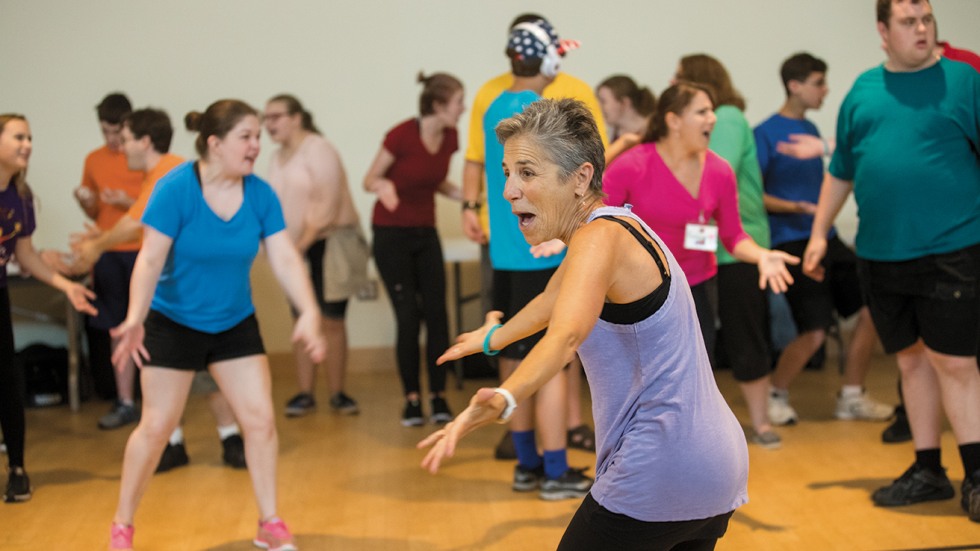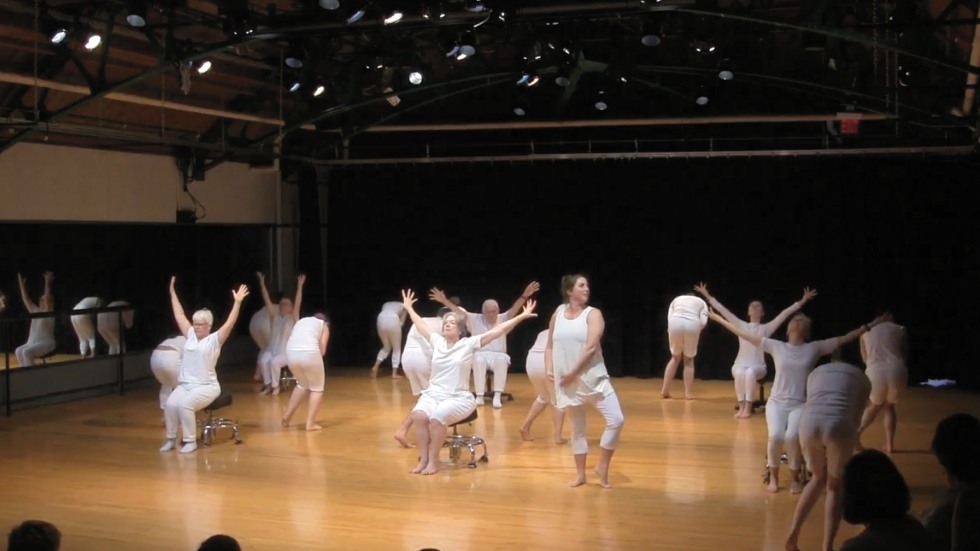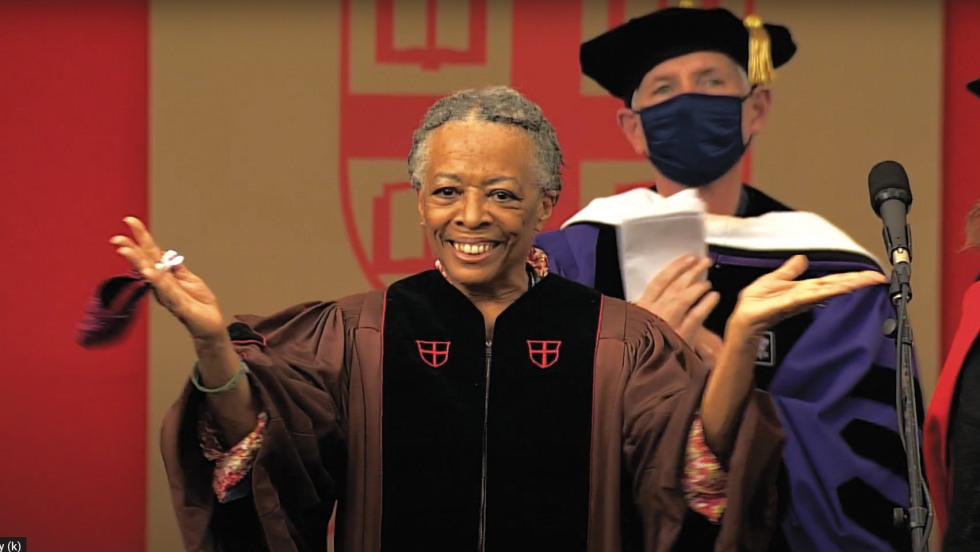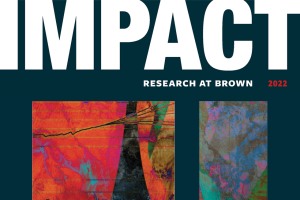Expressive arts program at Brown grants freedom of movement, peace of mind
Co-founded by distinguished lecturer Julie A. Strandberg and her former student, Artists and Scientists as Partners (ASaP) symposiums enable people with certain neurological disorders to find joy, connection and longed-for freedom.
PROVIDENCE, R.I. [Brown University] — “A dance is a story,” said Julie Adams Strandberg, distinguished senior lecturer in the dance program of the Department of Theatre Arts and Performance Studies at Brown. “It has to be passed on.”
The stories told on the stage of the Ashamu Dance Studio during the Artists and Scientists as Partners (ASaP) symposiums are about grace, as dancers — both seated and on foot — perform rhythmic, swaying movements to a piece of music. The dance is a shared story among a multigenerational cast of dancers from Brown Dance Extension, Dancing Legacy, Central Falls High School and Dance for All People (DAPpers), which offers classes for those with Parkinson’s disease and other movement challenges.
For the DAPpers participants, the story is also about building identity as dancers rather than as Parkinson’s patients and reconnecting with their bodies in welcome new ways as they perform repertory etudes adapted for a more limited range of movement.
“With Parkinson’s, everyone is always telling you what you can’t do, and your world shrinks,” said Steve, who was diagnosed with Parkinson’s in 2008. “But coming to this dance class and symposium and learning the etudes expands your horizon a little bit again. The doctors took care of me medically, but there are so many other aspects of my personality that weren’t being addressed.”

Class of 1980 graduate Rachel Balaban, who serves as co-director of ASaP and movement director for The Miracle Project New England, helps summer campers rehearse for a showcase performance.

DAPpers perform Danny Grossman's "Ecce Etude" with students and professional dancers at the 2018 ASaP Symposium in Brown's Ashamu Dance Studio.

Julie Adams Strandberg, distinguished senior lecturer in Theatre Arts and Performance Studies, receives the Susan Colver Rosenberger Medal of Honor in 2021.
Depression among the elderly is often overlooked. People with Parkinson’s may feel a sense of isolation and end up living in an inner world with an uncooperative body and inability to communicate. Autism often shares these characteristics. Expressive arts, such as dance, theater and singing, can enable people with these disorders to find joy, connection and longed-for freedom of movement.
Strandberg and a former student, Brown Class of 1980 graduate Rachel Balaban, a certified instructor in the Mark Morris Dance Group’s Dance for PD program, co-founded ASaP in 2013 to offer an expressive arts program at Brown for people with Parkinson’s disease and those with autism spectrum disorder. “My whole career is about making dance accessible to everyone,” said Strandberg. “The goal was to really empower everybody to have this experience.”
The ASaP program encompasses symposiums, interdisciplinary research and community engagement projects. The research and projects feed and support a two-semester undergraduate course sequence — Arts and Health: Theory and Arts and Health: Practice. Students learn the neuroscience of Parkinson’s disease and autism spectrum disorder, conduct empathy interviews to understand the lives beyond the medical diagnosis and participate in an eight-week site placement with either DAPpers or The Miracle Project.
The Los Angeles-based Miracle Project uses music, movement, theater and film to enter into the worlds of children and young adults with autism and related disorders. Since 2004, The Miracle Project has produced many success stories and has been the subject of two HBO documentary films. New national and international locations have opened, including the Brown-based Miracle Project New England, where students train as counselors.
“The kids with autism are finding this community that they can feel connected to,” Strandberg said. “Autism, by definition, means self, auto. Many people on the spectrum say, ‘I don’t want to be isolated. I just don’t know how to communicate.’”
“ The people in DAPpers and The Miracle Project feel like they belong somewhere, and that what they think and feel matters. ”
“At the beginning, we didn’t see anything similar between autism and Parkinson’s,” Strandberg said, “but when we started working with the two groups, a lot of similarities began to emerge. The people in DAPpers and The Miracle Project feel like they belong somewhere, and that what they think and feel matters. They’re not criticized, and they’re not thought of as their illness.
The work I’m doing now with Artists and Scientists as Partners is helping to figure out how to put the humanity back into the medical profession. And part of doing that is really looking at the arts in and of themselves as valuable in terms of healing,” she said.
Strandberg has taught thousands of dancers during her 50-year career at Brown. In 2021, she received the rarely awarded Susan Colver Rosenberger Medal of Honor from Brown faculty for her pivotal role in elevating the arts at Brown, for her work as the founder and cultivator of the dance program and for her empathy.
She sees more opportunities ahead. “We study books, we study literature. That’s what a dance is. The dance is an individual artist’s perspective on their time and on an idea or an experience,” she said. “I want to do more to make sure that access to these stories belongs to everybody, just like other literature. Once you stop telling a story, it has passed.”
